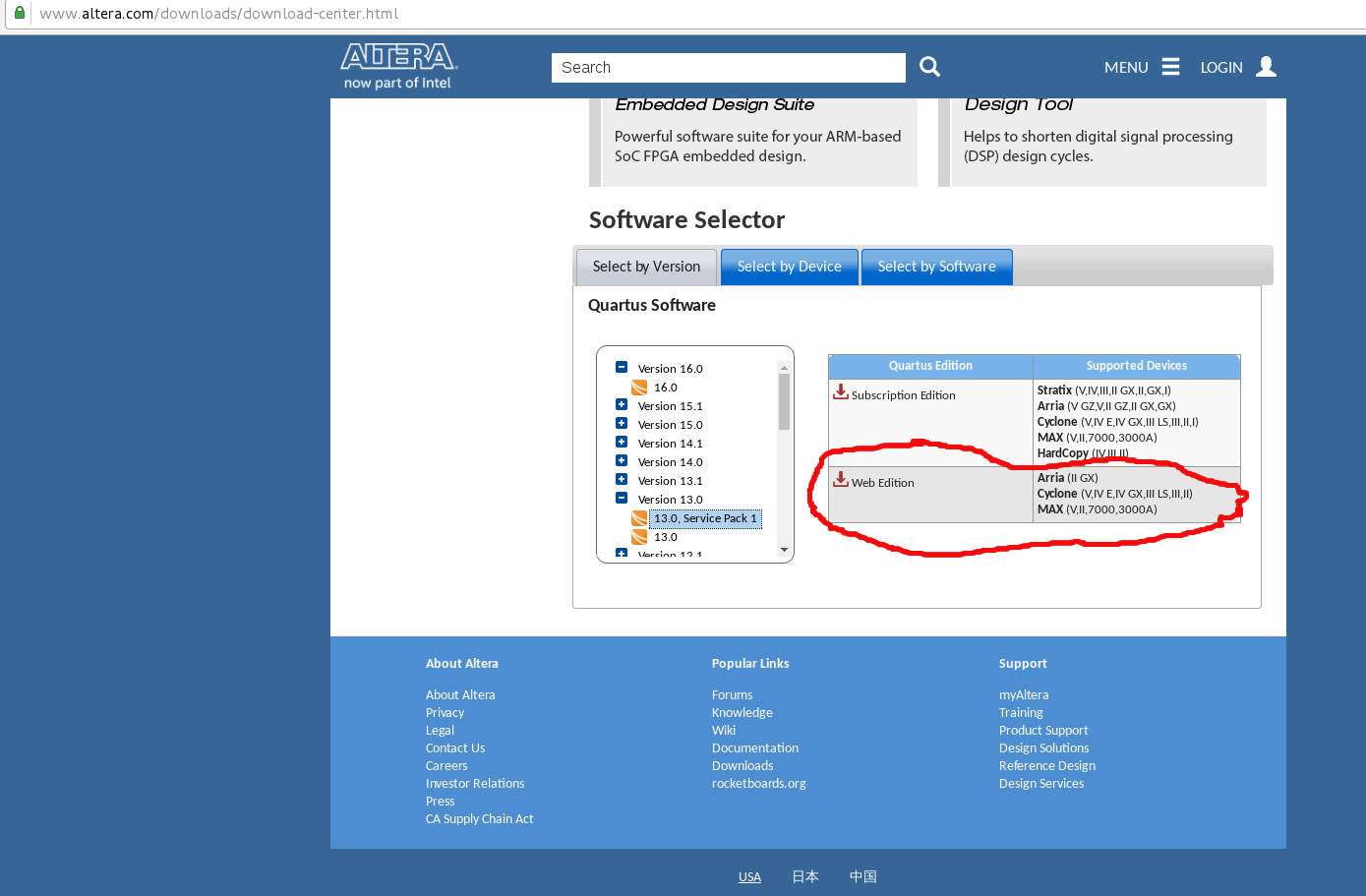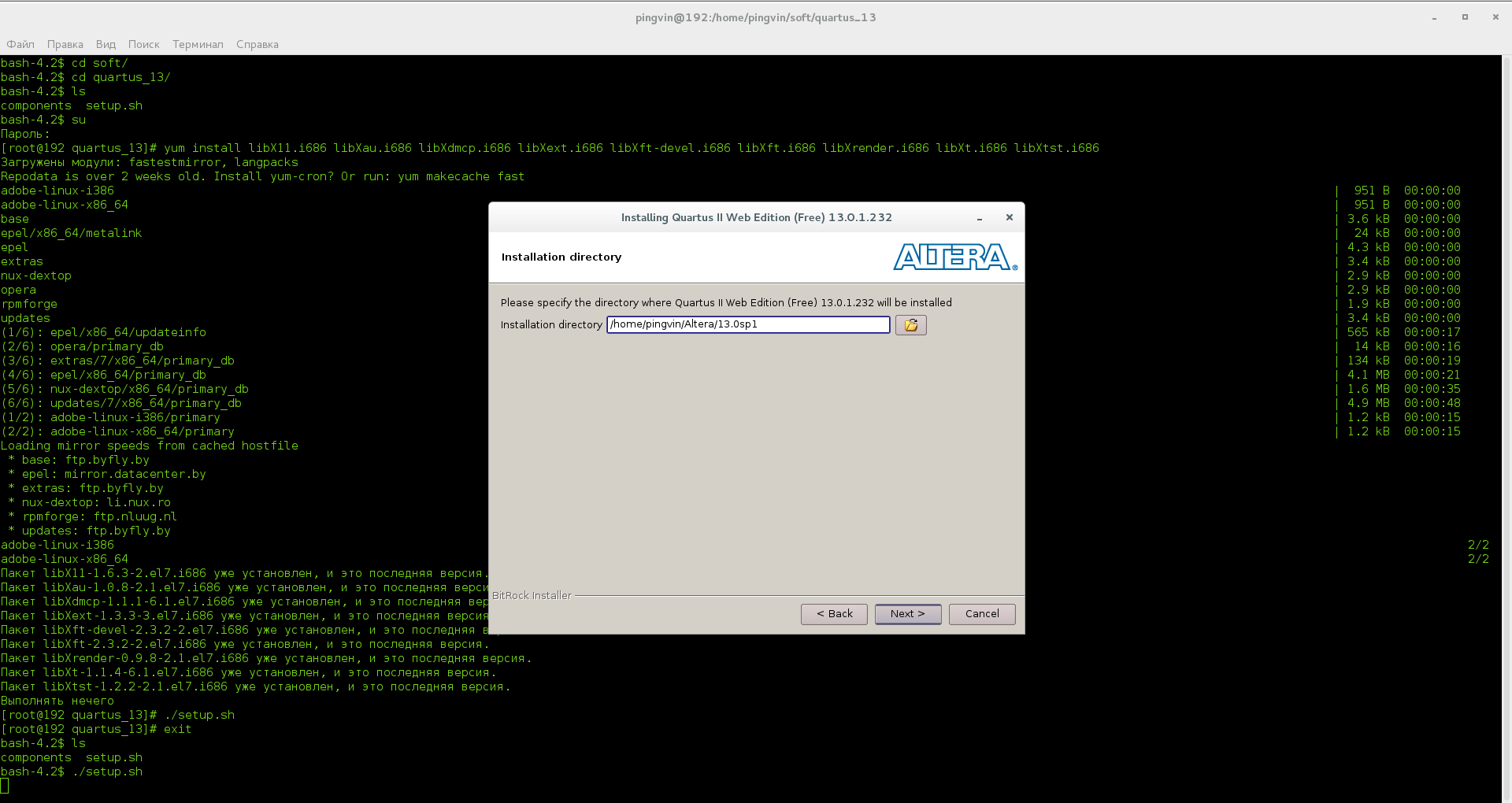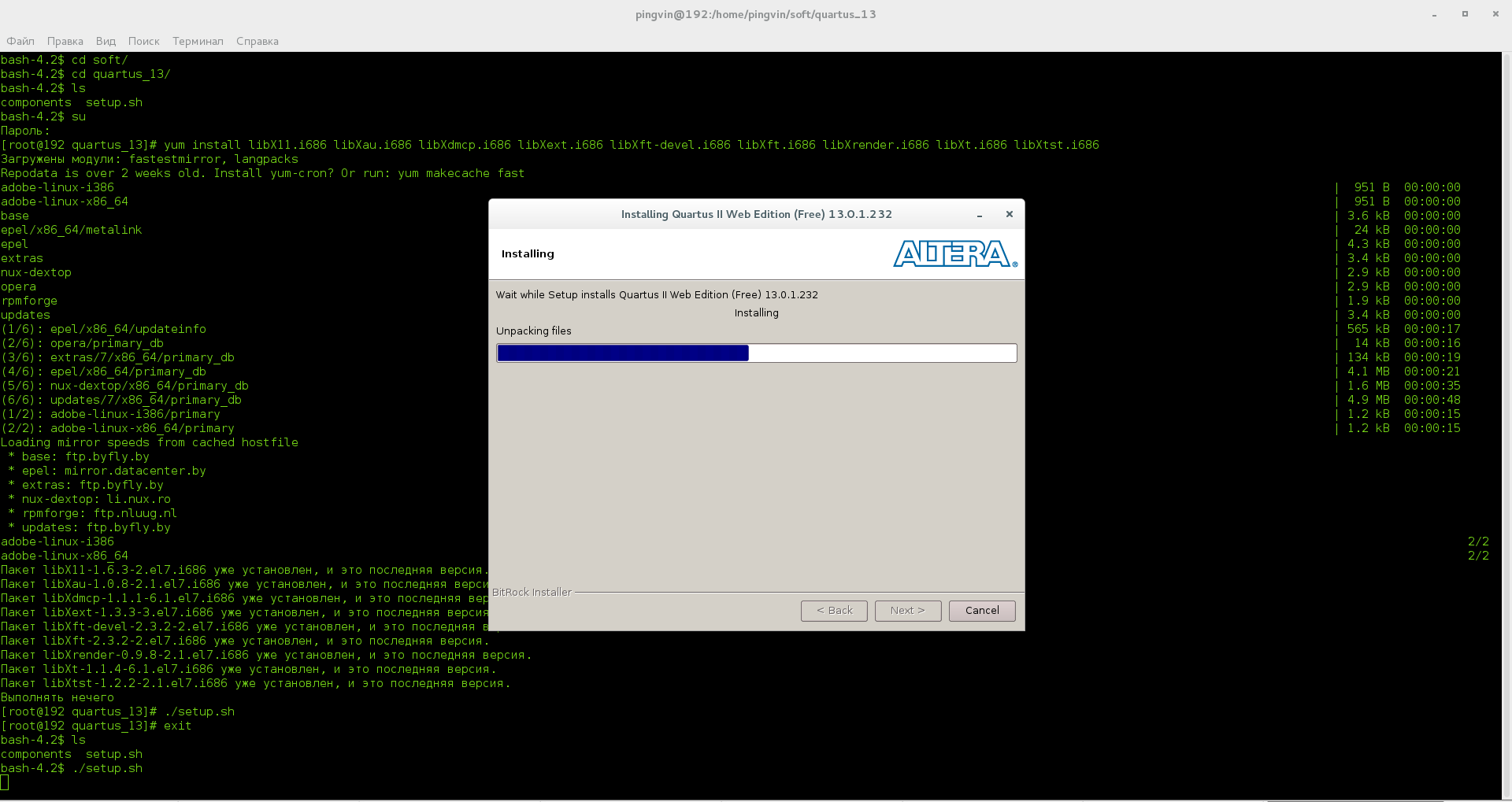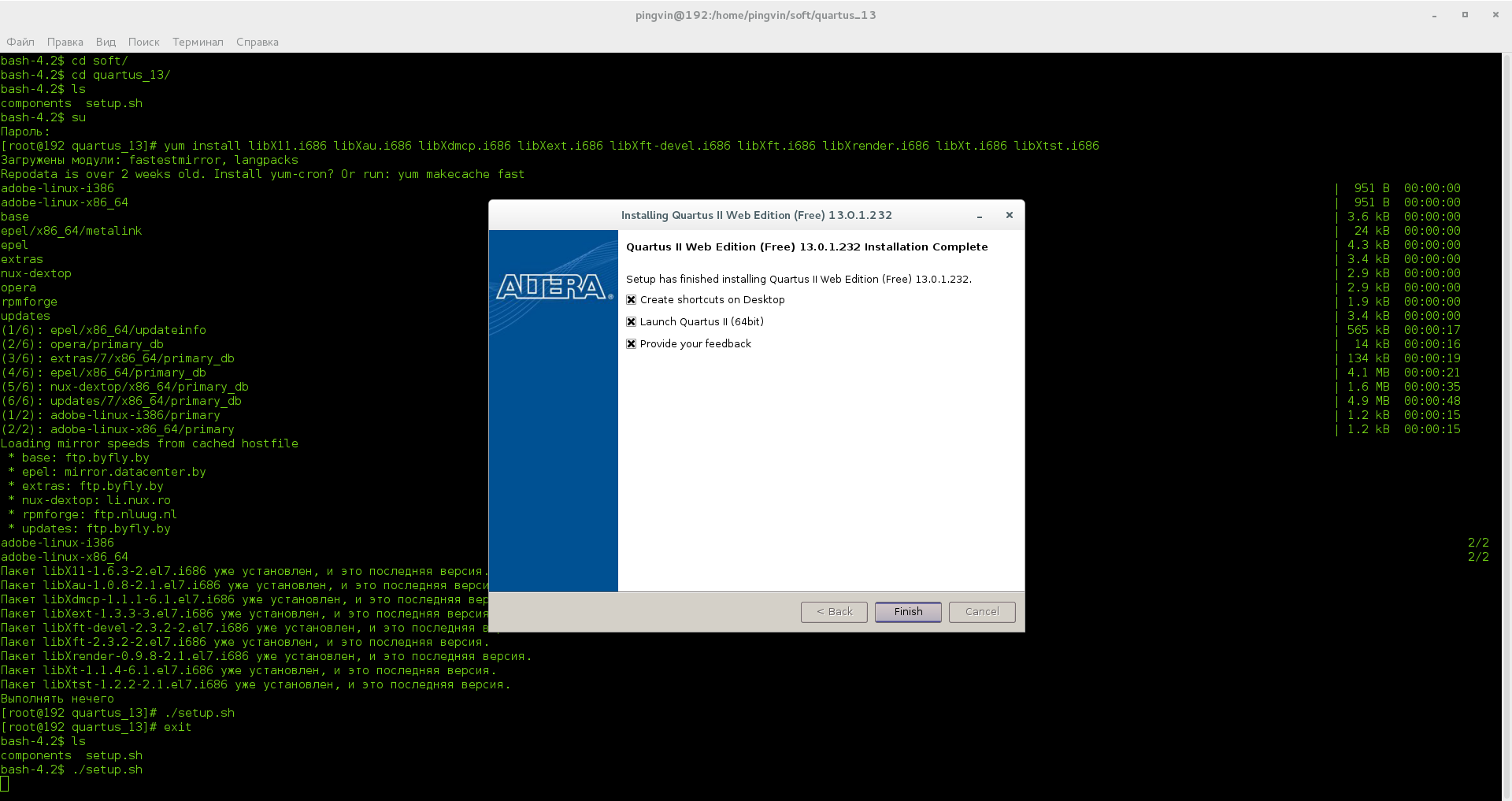Installing Quartus II on CentOS

If you, like me, are a dedicated Linux user, and even an electronics engineer who wants to join the world of FPGAs, then apart from being misunderstood by your colleagues, you are more likely to run into problems installing the appropriate software. Therefore, I will try to talk about my path and ease the path of followers. Welcome under cat.
Altera claims that their software is capable of running RHEL-based systems. Therefore, we will install Altera Quartus II 13.0 sp1 Free (the “freshest” version that supports the crystals of interest to me) on a fresh CentOS 7. And the first feature: only the x64 version of the system is suitable for installation. Well, we’ve made this point, go to Altera’s website, go through a tedious registration, on the download page we choose the version we need and download it:

After a long wait (4.8 GB of archive is not a joke), unpack the archive and happily drive in:
')
./setup.sh And! .. and nothing. Those. nothing at all, no mistakes as well as no signs of life. We climb into Google and find out, we learn that the altera, despite the performance only in x64 systems, requires some 32-bit libraries. Google further and finally compile a list of these same libraries. Install them (do not forget to log in as root):
# yum install compat-libstdc++-33.i686 expat.i686 fontconfig.i686 freetype.i686 glibc.i686 gtk2.i686 libcanberra-gtk2.i686 gtk2-engines-2.18.4-5.el6.centos.i686 libpng.i686 libICE.i686 libSM.i686 libuuid.i686 ncurses-devel.i686 ncurses-libs.i686 PackageKit-gtk-module.i686 tcl-devel.i686 tcl.i686 zlib.i686 # yum install libX11.i686 libXau.i686 libXdmcp.i686 libXext.i686 libXft-devel.i686 libXft.i686 libXrender.i686 libXt.i686 libXtst.i686 
There may be the following problem:
Error: Multilib version problems found. This often means that the root cause is something else and multilib version checking is just pointing out that there is a problem. Eg.: 1. You have an upgrade for libgcc which is missing some dependency that another package requires. Yum is trying to solve this by installing an older version of libgcc of the different architecture. If you exclude the bad architecture yum will tell you what the root cause is (which package requires what). You can try redoing the upgrade with --exclude libgcc.otherarch ... this should give you an error message showing the root cause of the problem. 2. You have multiple architectures of libgcc installed, but yum can only see an upgrade for one of those arcitectures. If you don't want/need both architectures anymore then you can remove the one with the missing update and everything will work. 3. You have duplicate versions of libgcc installed already. You can use "yum check" to get yum show these errors. ...you can also use --setopt=protected_multilib=false to remove this checking, however this is almost never the correct thing to do as something else is very likely to go wrong (often causing much more problems). Protected multilib versions: libgcc-4.4.7-4.el6.i686 != libgcc-4.4.7-3.el6.x86_64 You could try using --skip-broken to work around the problem You could try running: rpm -Va --nofiles –nodigest Instead of libgcc, you might have something else. For example, I had libuuid. This means that the installed 32-bit library has a newer version than the 64-bit library available on the system. The problem is solved by updating the library. In my case, it looked like this:
# yum install libuuid.i686 libuuid.x86_64 (I didn’t immediately take the screenshot, and then I was too lazy to demolish the library.)
Now, when all the necessary libraries are standing, you can run setup:
./setup.sh 
The windows-style installation window opens:

Carefully read the license agreement:

Select the installation directory, after making sure that it is available for recording:

We decide what kind of crystals we need:

The installer estimates the available space:

Come and brew tea ...

After tea, we return to the computer and see the picture:

In fairness, I note that regardless of the arrangement of the crosses, the window will close without any other actions. That is, neither the labels will not create, nor the program will not start.
Actually all - Quartus installed. What to do with it further and additional jokes awaiting Linuxoids in subsequent publications.
Source: https://habr.com/ru/post/310160/
All Articles